Rosy Boas are small docile snakes native to southwestern North America.
They are one of only two species of Boa in the United States and are known for their ability to subdue prey by squeezing it with their bodies.
These strong snakes are easily identified by the three tell-tale stripes along their body. This is why they are sometimes known as three-lined Boas.
Rosy Boas get their name from the salmon-pink belly of some specimens in Baja California and southwestern California.
Already in love? Keep reading to learn how to prepare the perfect habitat and how to care for these amazing snakes!
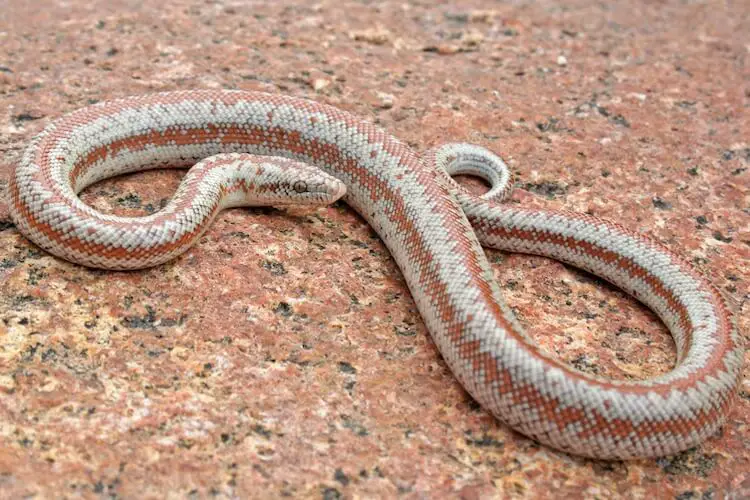
Rosy Boa Snake Overview
A Rosy Boa is a calm tempered snake commonly found throughout the California sections of the Mojave and Colorado deserts.
They can also be found in the southwestern corner of Arizona and the state of Sonora In Mexico.
The scientific name for Rosy Boas is Lichanura trivirgata and they belong to the Boidae family. The name trivirgata comes from the three distinct stripes on their body.
Edward Drinker Cope named these snakes trivirgata in 1861 when he produced the first species description.
Typically Rosies have a light gray, yellow, or tan base with a deep maroon, orange, or brown stripe color. The stripes can be broken or neat and high contrast.
These snakes are calm and tolerate handling well. Sometimes they may ball up in fear and musk their offender. However they are small and nonvenomous and are well suited for first time keepers.
Rosy Boas are great eaters and thrive in captivity.
Despite their minimal husbandry requirements they are less popular than other beginner friendly snakes so you could be one of a small group of keepers for this species.
What We Like About Rosy Boas
Pros
- Calm temperament.
- Simple husbandry requirements.
- Small size.
- Tolerates handling well.
Cons
- Hides during the day.
- Prefers to live and hide in rocks.
- Requires a high basking temperature.
Species Appearance
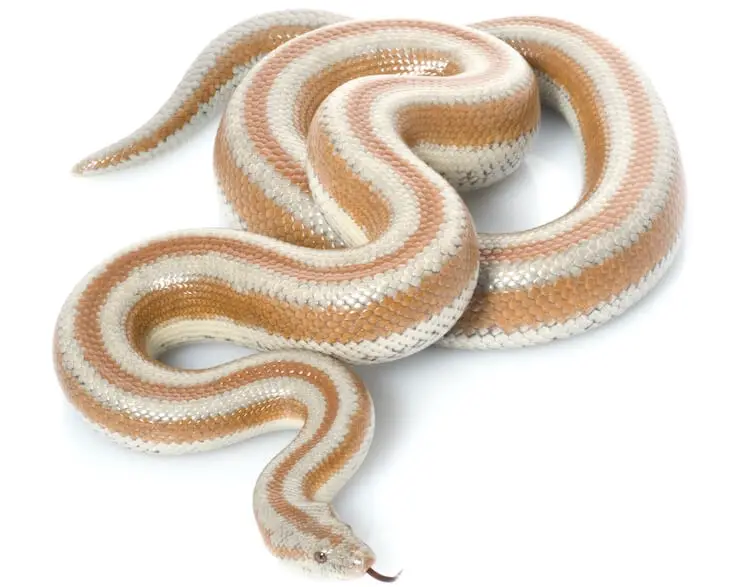
Rosy Boa snakes have a light base color with three dark stripes along their bodies. They also have light bellies with dark spots and blotches.
Different regions (e.g. California, Arizona or Mexico) can produce various colors:
- Desert rosy boas are light tan or gray with rusty-maroon stripes. They have two parallel rows of dark brown spots down their bellies.
- Coastal rosy boas have orange stripes on a cream or gray base. They may have spotted or pink bellies.
- Mexican rosy boas have pale, creamy base colors with dark brown or black stripes. They also have light bellies with randomly spaced dark spots.
Their high color variability has led to controversy in the herpetological community.
Some people believe there are actually three to five subspecies. Others think they are all the same species and call them three-lined Boas.
How Big Do Rosy Boa Snakes Get?
Generally Rosy Boas have a maximum length of 3 feet and weigh up to one pound. Females tend to be longer and males can be as short as 1.5 feet. Despite the size difference males typically have longer tails relative to their body size.
At birth Rosy Boas are typically 12 inches long.
Color and Morphs
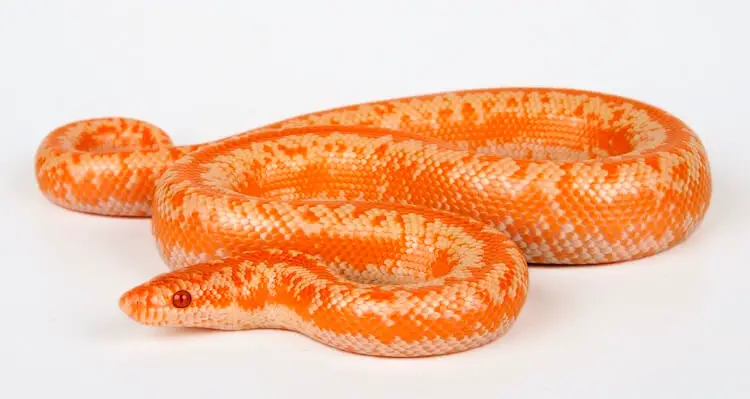
Rosy Boas have a naturally large color range and also have many morphs such as the albino (pictured above). Some morphs can be cream with light peach stripes.
Natural base colors include tan, cream, yellow, light brown, or various shades of gray.
Their stripes can be brown, black, rusty orange, or maroon.
Rosy Boa Care Sheet
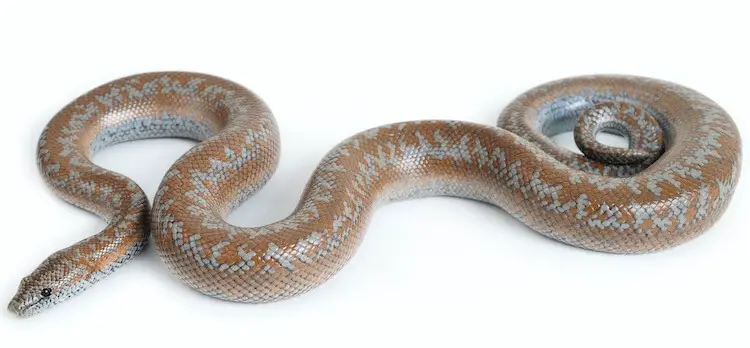
What Does A Rosy Boa Eat?
This pet snake is carnivores and feeds primarily on small rodents such as mice and small rats. In the wild their diet can include:
- Mice and small rats
- Chicks
- Lizards
- Amphibians
- Other snakes
Rosy Boas are a type of constrictor snake. To eat they will bite and encircle their prey before squeezing it to death and eating it head-first.
In captivity it is best to feed frozen-thawed mice and the occasional frozen chick.
To determine the size of prey to feed you should measure the thickest part of your snake’s body and feed mice that are slightly smaller than this measurement.
They are typically very good eaters in captivity:
- Hatchlings and juveniles should be fed once a week.
- Adults should be fed every 10-14 days to maintain a healthy weight.
Even with their expert hunting skills it is much safer to feed frozen-thawed mice in captivity. This can help to avoid any injuries to your pet.
To thaw and feed their prey:
- Remove frozen prey from the freezer and place in the refrigerator overnight.
- Once thawed, placed the bagged mouse in warm water to raise the body temperature to roughly 98-100°F.
- After thawing the prey hold it with tongs and wiggle it to get your snake’s attention!
- Continue wiggling after they strike to encourage normal constricting behaviors.
Your snake should always have access to a water bowl. Small bowls are recommended as they will not raise the humidity too much.
Known Health Issues
After purchasing a new reptile you should keep it in a simple enclosure that is easy to examine and keep clean. If your Rosy Boa appears to be healthy, active, and eating then move them out of quarantine after 30 days.
With correct husbandry and a routine feeding schedule these snakes can live to 25 years old.
However, just like any reptile they can become sick if they receive poor husbandry. Common diseases include:
- Respiratory infections.
- Internal parasites.
- Mites.
- Scale or Mouth rot.
Respiratory infections and scale rot are typically caused by poor substrates, incorrect humidity, or low enclosure temperatures. This allows for bacterial growth and is easily prevented with correct husbandry.
Internal parasites are typically diagnosed with a fecal exam by a vet. Some snakes may stop eating due to parasite overload.
External parasites (e.g. mites) are often treated with increased cage cleaning and anti-mite products.
You can use the chart below to help you determine if your Rosy Boa is sick:
Signs They Are Healthy
- Consistent eating.
- Healthy urate-feces ratio.
- Docile, calm, no unusual aggression.
Sickness Symptoms
- Hissing, clicking, or wheezing.
- Lethargy.
- Over-soaking.
Rosy Boa Habitat
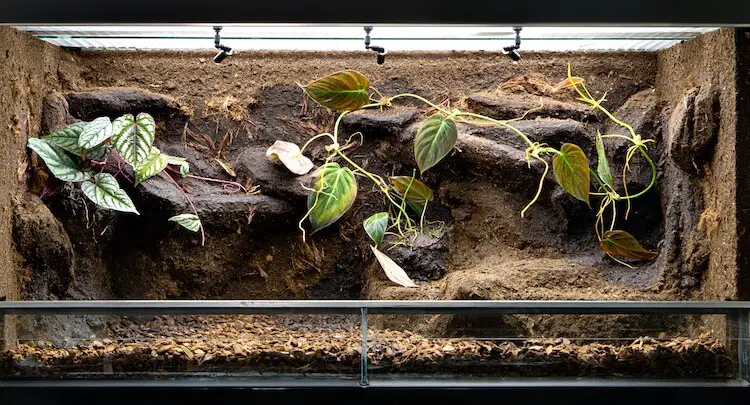
Rosy Boas are terrestrial snakes native to the hot, arid deserts of southwestern North America.
Their natural habitat is very hot so they are normally seen at dawn or dusk and occasionally at night during very hot periods.
Rosie boas are found in areas with rock piles and granite outcrops.
They like to hide in crevices between rocks and rarely inhabit barren areas.
The desert is hot and has extremely low humidity so their tank should mimic these conditions. Plenty of rocks and hides are also important for enrichment.
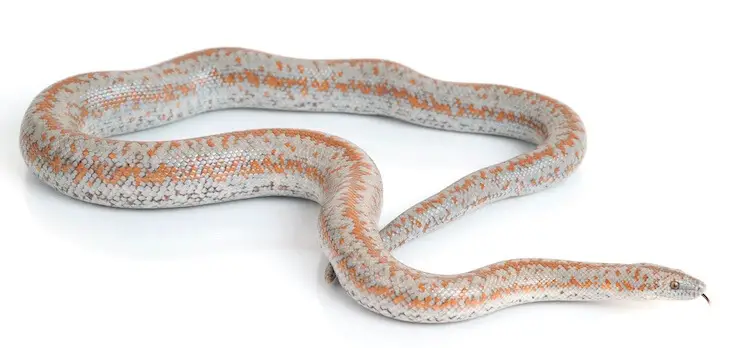
Rosy Boas grow up to three feet in length and have very thick bodies. It is important to give your pet an appropriately sized enclosure.
As hatchlings they can live happily in a 10 to 15-gallon tank. Adults will need a larger tank to thrive that is ideally 20 or 30-gallons.
Their tank should have a locked top to prevent escapes. Screen lids are great for glass enclosures because they allow excess humidity to escape.
The tank should have plenty of large rocks for them to hide between and shed against.
There should also be hides at either end of the tank to act as “cool” and “hot” hides. Place the water bowl near the cool hide to prevent too much evaporation. The best tank set up is below:
- Tank Type: screen-top glass.
- Tank Size: 30-gallon.
- Lighting: 75-watt basking lamp.
- Substrate: aspen shavings.
Snakes thermoregulate themselves by moving between different environmental temperatures so providing a heat gradient is very important. You should establish a “hot” and “cool” side of the tank.
You should keep a 75-watt bulb basking lamp over a basking spot on the hot side of their cage. The temperature under the lamp should be 85 – 90°F.
Basking lamps are also useful to establish a day-night cycle for these nocturnal snakes.
At night the lamp should be turned off and you should use a lower wattage ceramic heater or 60-watt infrared bulb connected to a thermostat. At night the hot side should remain around 80-85°F and the cooler side should drop to around 75°F.
A Rosy Boa’s tank should be around 40% humidity.
Because of their low humidity requirements any substrate like coconut husk and soil should be avoided. Cedar and pine shavings produce irritating dust so should be avoided too.
Dry beddings like aspen shavings, large-grain sand, or a sand-soil mixture should be used for their substrate.
If you choose to use a sand-soil mixture make sure it is organic, perlite and fertilizer free. If the soil is too moist bake it in the oven for 15 minutes before mixing.
Cleaning & Misting Tank
Cleaning your snake’s tank is important to maintain good health.
The tank should be spot-cleaned for feces daily and wash the water bowl to prevent any scum from growing.
At least once a month you should deep clean your snake’s enclosure.
Remove all décor and wash with soap and water, rinse well and leave outdoors or bake to dry. Replace all substrate after cleaning the interior of the tank.
Remember any moist décor or substrate can drastically increase humidity so ensure it is completely dry before returning.
Are Rosy Boas Good Pets?
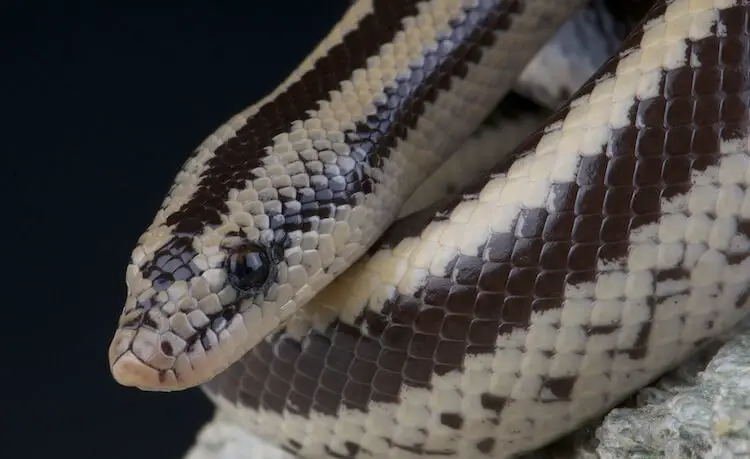
Rosy Boas are slow snakes that rarely leave their rock crevices. They grow to three feet in length and have simple care requirements making them great for beginners.
In the wild Rosy Boas are secretive snakes that rarely leave their burrows. For this reason, much of their wild behavior is poorly researched.
What is known is that they rarely bite.
Instead if they feel threatened they release a foul smelling liquid from their vent or ball up and hide their heads.
In their enclosure they will be nocturnal all year-round. However in the wild they are crepuscular during Spring and late Fall and only nocturnal for the remaining part of the year.
Some keepers induce brumation to mimic wild behaviors. Brumation is a type of hibernation where a snake decreases its activity levels, their metabolism, and avoids eating.
If not done carefully brumation can cause health issues. You should monitor your snake very carefully during brumation.
Do Rosy Boas Like Being Handled?
Adults are docile, tolerate handling well and rarely bite. Young Rosy Boas may be somewhat fearful of humans and being handled. You should give them at least two weeks to adjust to their new enclosure before any handling takes place.
You should work with your Boa to socialize them to enjoy handling.
This can be accomplished by holding your snake for 10 to 15 minutes each day for two weeks.
Before attempting to handle your snake it is important to practice good personal hygiene and wash your hands. Occasionally snakes can harbor diseases (e.g. salmonella) and pass them to humans.
To pick up your Rosy Boa start by gently touching them until they notice you. Then reach in and slowly pick them up.
If your snake strikes at random when you reach in you should use a hook to gently rub the snake to prepare them.
Always avoid handling your snake for at least two days after feeding. Handling too soon after feeding can cause stress and a recently fed snake may even regurgitate.
Buying A Rosy Boa Snake
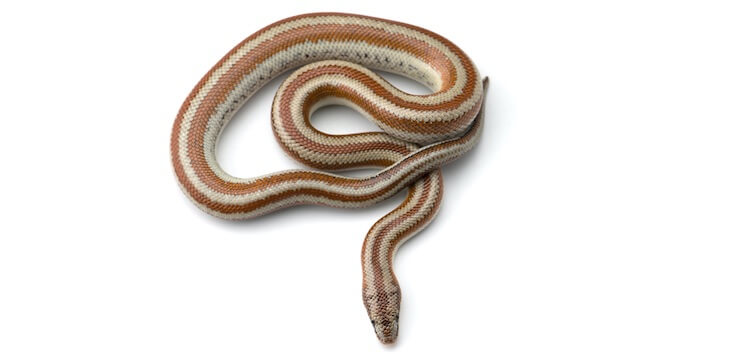
Rosy Boas are growing in popularity but it can still be difficult to find one.
Typically a reptile expo is the best way to find these snakes for sale.
Rosy Boas are not an endangered reptile, however purchasing wild snakes can damage wild populations.
You should only purchase captive bred snakes from knowledgeable breeder. The breeder should be able to tell you the snake’s age, temperament, and how often it feeds.
If the snake has not successfully eaten at least three times, seems lethargic, is wheezing or struggling to shed then do not purchase it.
How Much Does A Rosy Boa Cost?
Rosy Boas can be purchased for $75 – $100 from a captive breeder. High contrast or specific locality colorations such as the Desert rosy can cost $200. Morph breeding can also increase the price of these snakes. Some morphs such as the albino can cost $300.
| Rosy Boa Facts | |
|---|---|
| Common Name | Three-Lined Boa |
| Scientific Name | Lichanura trivirgata |
| Price | $75 to $100 |
| Size | 2 – 3 feet long |
| Lifespan | 25 to 30 years |
| Diet | Mice, small rats, small chicks |
| Tank Size | 30-gallon tank |
| Humidity & Temperature | Basking: 85-90°F Ambient: 72-75°F Humidity: < 40% |
| Popular Alternatives | Kingsnakes, Corn Snakes and Ball Pythons |
Summary
Rosies are small beautiful snakes that thrive in captivity.
As one of only two United States boas they are one of the most unique species in North America!
Rosy Boas are great eaters, tolerate handling well and require very little attention.
The only downside is they are nocturnal so it can make them hard to see in the daytime. If you are interested in a diurnal snake with similar care requirements then a Kingsnake may be for you.
Could the Rosy Boa be your next family member? Let us know what you think below.

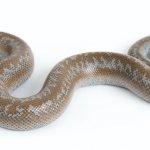
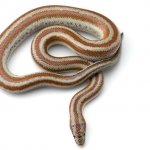
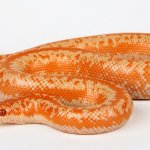
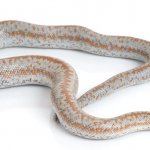
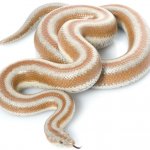
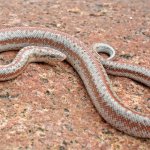
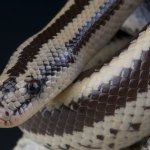
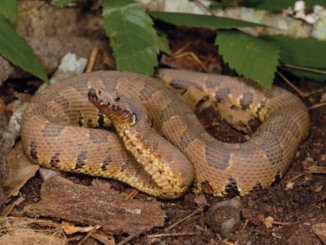
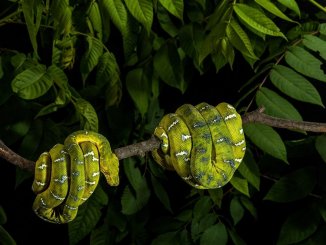
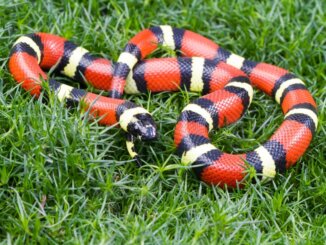
I am in need of a service animal, and am in admiration of this beautiful creature. Are you of the mind that I may be able to adapt this docile thing to to wear under a high waisted amish-stylish skirt at work (I work at night) with a fara-day like crate? I am very gentle natures, and would like an excuse to be more gentle. Could I crate train it to cuddle me at night(?) or day time with blackout curtain type window settings- in the crate under my covers with Aspen shaving “substrates” if I also gave it mating options?
Docile should also mean\include “adaptable,” no? I just wouldn’t want to torture it.
Are there other small snakes I could train to stay in my pocket or in person?
Personally, we think the animal, although indeed adaptable and docile, is not suited to be carried around on your person for long periods of time (if I understood correctly).
The enclosure wouldn’t be large enough or have the ideal conditions for the snake, which comprise lighting, UV light and temperature needs that must be met (as well as rocks which would be very heavy!). In generally we don’t advise to go into the hobby lightly, but only when sure you can provide the best care for your animals. So check our care sheet and see if you can in fact provide those conditions.